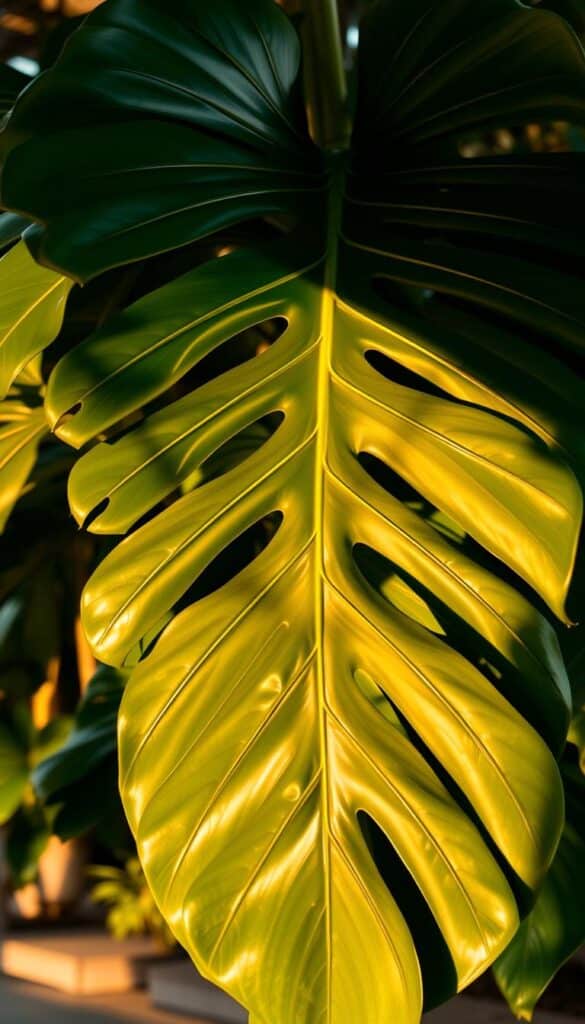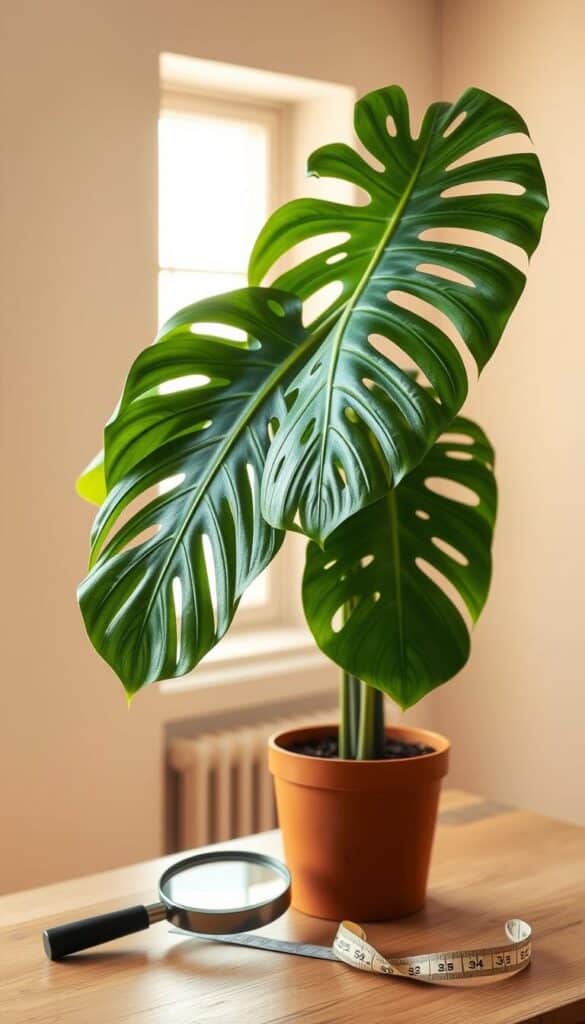Like many, I’ve always been captivated by the unique beauty of Monstera plants. Their stunning, holey leaves and elegant growth make them a standout in any space. But what really caught my attention was their hefty price tags. Why do these plants command such a premium in the market?
Monstera plants are more than just a decorative piece; they’re a statement. Their popularity has soared, but so have their costs. This isn’t just about demand. The journey from seed to your home is filled with challenges that drive up their price.
Slow growth and the need for precise care are major factors. Monsteras take years to mature, and their cultivation requires meticulous attention to detail. This makes them more expensive to produce than many other houseplants.
Rarity also plays a role. While Monsteras are popular, they’re not as widely available as other plants. This scarcity, combined with their aesthetic appeal, contributes to their higher cost.
Join me as we dive into the world of Monstera plants and uncover the reasons behind their premium pricing. Understanding these factors will shed light on what makes them such a valuable addition to your home.
Key Takeaways
- Monstera plants are highly sought after for their unique, holey leaves and elegant growth.
- Their slow growth and high care requirements contribute to their premium pricing.
- Rarity and limited supply are key factors in their high cost.
- Monsteras are not just decorative; they’re considered a valuable investment in home décor.
- The production process for Monstera plants is complex and expensive.
Introduction to Monstera Plants and the Rising Price Trend
My fascination with Monstera plants began when I first saw their striking, holey leaves. These unique features quickly turned my home into a lush oasis. But what caught my attention was their steep price tags. This made me curious about the factors driving their cost.
Monsteras have become a favorite among houseplant enthusiasts. Their popularity has led to a surge in demand, which in turn has driven up their price. Social media has played a significant role in their rise, showcasing their aesthetic appeal and fueling interest among both seasoned collectors and new gardeners.
While their growth is slow, the allure of Monstera deliciosa remains strong. This balance between their gradual development and their widespread popularity sets the stage for a deeper exploration of what makes these plants so valuable.
My Journey with Monstera Plants
I fell in love with Monsteras for their unique, perforated leaves. Bringing them into my home not only enhanced my space but also sparked a passion for indoor gardening. Their presence transformed my living area into a vibrant, natural retreat.
How These Plants Captivated Plant Enthusiasts
The increasing high price of Monsteras reflects the rising demand. Enthusiasts and new gardeners alike are drawn to their distinctive beauty. Social media platforms highlight their appeal, making them a must-have for many. Despite their slow growth rate, Monsteras continue to capture hearts, driving their popularity ever higher.
why monstera plants are priced high in the plant market
Have you ever wondered what makes certain plants so expensive? For Monstera plants, it’s a combination of factors that drive their premium pricing.
Size plays a significant role. These plants can grow quite large, and bigger specimens naturally command higher prices. Additionally, the age of the plant matters—older, more mature plants are highly valued and often come with a heftier price tag.
Variety also influences the cost. Rare and variegated types, like the Monstera deliciosa, are in high demand and can be more expensive due to their unique appearance. The slow growth rate of these plants means they take more time to reach a desirable size, which can increase their scarcity and overall cost.
The cultivation process requires patience and time, contributing to the higher rate of these plants. These factors combined create a perfect storm that drives up their price in the market.

The Impact of Demand, Rarity, and Social Media Influencers
Social media has become a powerful force in shaping trends, and the world of plants is no exception. The rise of Monstera plants as a status symbol among collectors can be traced back to their prominence on platforms like Instagram and Pinterest.
How Social Media Sparks Frenzy Among Collectors
The high demand for these plants is driven by their rarity and the exclusive nature of certain varieties. Social media platforms have turned Monsteras into a coveted status symbol, with influencers showcasing their unique beauty and fueling a sense of urgency among collectors to own one.
The Role of Scarcity and Collector Mentality
Many collectors view these plants as prized investments, which elevates their market value. The scarcity of rare specimens, combined with their aesthetic appeal, creates a sense of exclusivity that commands higher prices. This collector mentality is further amplified by online communities and social media accounts that actively promote the value of rare plants.
Influential plant enthusiasts have played a significant role in accelerating this trend. By sharing their passion and expertise, they’ve made these plants a must-have item for many, further driving up demand and, consequently, their price.
Rarity, Variegation, and Growth Challenges That Drive Up Costs
The allure of rare and variegated Monstera specimens is undeniable. These plants boast unique visual qualities that set them apart from more common varieties. Their distinctive patterns and colors make them highly sought after by collectors and enthusiasts alike.
The Allure of Variegated and Rare Specimens
Variegated Monsteras, for instance, showcase stunning leaf patterns that elevate their quality. Even slight variations in their markings can significantly increase their value. When compared to popular alternatives like philodendron, the visual appeal of these Monsteras is unmatched.
A high-quality variegated Monstera can become a prized collectible. For example, a specimen with unique, intricate patterns might be displayed as a centerpiece in a plant collection. This exclusivity naturally drives up their cost.
Slow Growth Rates and Propagation Challenges
The growth rate of these plants is another critical factor. Monsteras grow slowly, and their propagation requires meticulous care. This slow process, combined with the need for precise soil conditions, adds to the overall expense.
Careful attention to soil quality and the right environment is essential. These factors not only affect the plant’s health but also its value. As a result, the challenges in cultivation justify the premium pricing of these rare specimens.
Practical Considerations for Buying and Shipping Your Monstera
When it comes to purchasing a Monstera, there are several factors to consider to ensure you make a wise investment. From evaluating the plant’s size and age to checking the seller’s reputation, every detail matters.
Evaluating Size, Age, and Seller Reputation
Size is a key factor—larger plants naturally cost more. Similarly, the age of the plant plays a role, as older plants are often more valuable. Always check the price tag in relation to the plant’s condition and maturity.
It’s crucial to buy from a trusted nursery or a reputable seller. This ensures you’re getting a healthy plant. Shipping is another important aspect; proper packaging is essential to protect the plant during transit.
When shopping online, I recommend verifying the seller’s reputation and reading reviews. This helps minimize risks and ensures your Monstera arrives in optimal condition. A trusted nursery will handle packaging carefully, making sure the plant leaves their facility in the best possible shape.

In my experience, taking the time to research and choose a reliable seller is worth the effort. It not only ensures you get a healthy plant but also supports ethical practices in the plant market.
Psychological and Practical Aspects Behind the High Price Tag
The allure of Monstera plants goes beyond their stunning looks. For many enthusiasts, these plants symbolize exclusivity and status. This mindset is a key driver of their premium pricing.
Understanding the Collector’s Mindset
Plant enthusiasts often view Monsteras as a unique tag of exclusivity. The desire to own a rare specimen can justify paying a higher price. Social media amplifies this appeal, making these plants a must-have luxury item.
Production Costs and Supply Limitations
Behind the scenes, production challenges contribute to the cost. Strict cultivation requirements and limited supply mean meeting demand is tough. These factors, combined with enthusiast demand, create a perfect storm that keeps prices high.
Conclusion
As I reflect on the journey through the world of Monstera deliciosa, it’s clear that their value extends beyond mere decoration. The combination of scarcity, meticulous cultivation, and shifting consumer preferences creates a perfect storm that keeps these rare plants in high demand.
A rare plant, especially one with unique variegation or size, can easily cost a hundred dollars more than its common counterparts. This significant price difference is driven by both the natural challenges of growth and the allure of exclusivity.
For those considering adding a Monstera deliciosa to their collection, patience and research are key. Understanding the dynamics of scarcity and the factors influencing their cost can help make informed decisions. The enduring popularity of these plants, supported by both their beauty and the psychology of collecting, ensures they remain a cherished investment for enthusiasts.
In conclusion, the Monstera deliciosa is more than just a decorative piece—it’s a testament to nature’s artistry and human desire for the extraordinary. Whether you’re a seasoned collector or a new enthusiast, embracing both the beauty and market dynamics of these rare plants will enrich your journey in the world of indoor gardening.
